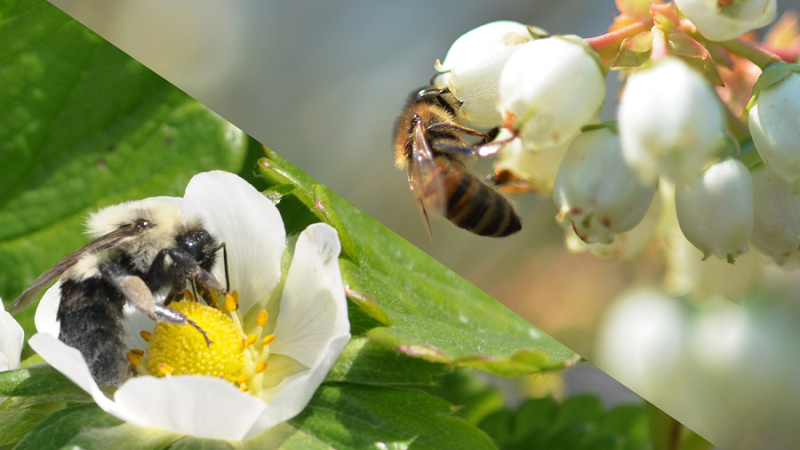USDA Provides $8 Million To Help Boost Declining Honeybee Populations
USDA has announced $8 million in Conservation Reserve Program (CRP) incentives for Michigan, Minnesota, North Dakota, South Dakota, and Wisconsin growers and ranchers who establish new habitats for declining honeybee populations. More than half of the commercially managed honeybees are in these five states during the summer. This announcement comes in addition to $3 million USDA designated to the Midwest states to support bee populations earlier this year through the Natural Resources Conservation Service Environmental Quality Incentives Program.
“American agricultural production relies on having a healthy honeybee population,” said Agriculture Secretary Tom Vilsack. “In recent years, factors such as diseases, parasites, pesticides, or habitat loss have contributed to a significant decline in the honeybee population. This $8 million is part of the Administration’s ongoing strategy to reverse these trends and establish more plant habitat on Conservation Reserve Program lands to restore the bee population.”
The new CRP pollinator initiative is designed to further enhance current CRP land, allowing it to provide better access to nutritious pollinator forage. The program allows for managing or replacing existing vegetation with lower-cost, high-nutrition seed mixes that can support distinct blooming cycles of plants that benefit pollinators.
Honeybees, the pollinator workhorse of U.S. fruit and vegetable agriculture, will have more blooms from which to collect nectar and pollen to sustain and promote colony growth and honey production throughout the growing season. By assisting honeybees, the pollinator initiative helps USDA continue to secure the food supply. More than $15 billion worth of agricultural production, including more than 130 fruits and vegetables, depend on the health and well-being of honeybees.
Now is a critical time for efforts to support honeybee populations, which have been declining for decades in the U.S. The number of managed U.S. honeybee colonies dropped from 6 million in 1947, to just 2.5 million today.
This week, President Obama issued a memorandum directing U.S. government agencies to take additional steps to protect and restore domestic populations of pollinators, including honeybees. Vilsack and EPA Administrator Gina McCarthy will co-chair a new Pollinator Health Task Force to focus federal efforts to conduct research and take action to help pollinators recover from population losses.
For more information about the new pollinator initiative in the five Midwestern states, the continuous enrollment in the Conservation Reserve Program, and the pollinator habitat initiative, contact your local FSA office or go to fsa.usda.gov.
Source: USDA press release










